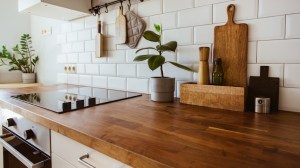Revamp Your Home with These Easy, Step-By-Step DIY Bathroom Flooring Ideas
If you’re looking to breathe new life into your bathroom without breaking the bank, DIY bathroom flooring projects are a fantastic solution. Not only do they allow you to customize your space to fit your taste, but they also empower you to tackle home improvement with confidence. In this guide, we’ll walk you through some easy and effective step-by-step methods for upgrading your bathroom flooring.
Choosing the Right Material for Your Bathroom Floor
Before diving into the installation process, it’s crucial to select the right flooring material. Popular options for bathrooms include vinyl, laminate, tile, and even cork. Vinyl is water-resistant and cost-effective; laminate offers a wood-like appearance; tiles are durable and stylish; while cork is eco-friendly and provides warmth underfoot. Consider factors such as durability, moisture resistance, and ease of installation when making your choice.

Preparing Your Space: Tools and Supplies Needed
Once you’ve chosen your material, gather the necessary tools and supplies. Typically needed tools include a measuring tape, utility knife or saw (depending on material), straight edge or ruler, adhesive (if required), grout (for tile), leveler if dealing with uneven surfaces, a trowel or roller for application in case of adhesive floors. Don’t forget safety gear like gloves and goggles.
Step 1: Remove Old Flooring
To start installing new flooring over existing surfaces in your bathroom effectively assess whether you need to remove old materials first. If you’re working with tiles or thick vinyl layers that are coming up easily then they should be removed completely first using a chisel or hammer carefully so as not to damage the subfloor underneath.
Step 2: Prepare The Subfloor
With old flooring out of the way (if applicable), inspect your subfloor for damages like rot or moisture issues which can affect longevity down the line – repair these if found. Next ensure it’s clean from debris before leveling any uneven spots using an appropriate leveling compound ensuring an ideal surface for laying down new materials.
Step 3: Installing Your New Flooring
Now comes one of the most exciting parts – laying down your new floor. Start at one corner of the room working towards an exit point ensuring snug fits along edges while maintaining consistent spacing according manufacturer guidelines where necessary such as between tiles depending on type chosen (e.g., grout lines). Finally secure everything in place allowing time per instructions given by product used before stepping back onto fresh floors.
Revamping your bathroom flooring can dramatically change its look and feel without extensive renovations or expenses. By following these simple steps tailored exactly around common DIY materials available today anyone can achieve stunning results from home improvement efforts that not only boost aesthetics but functionality too. Happy renovating.
This text was generated using a large language model, and select text has been reviewed and moderated for purposes such as readability.


